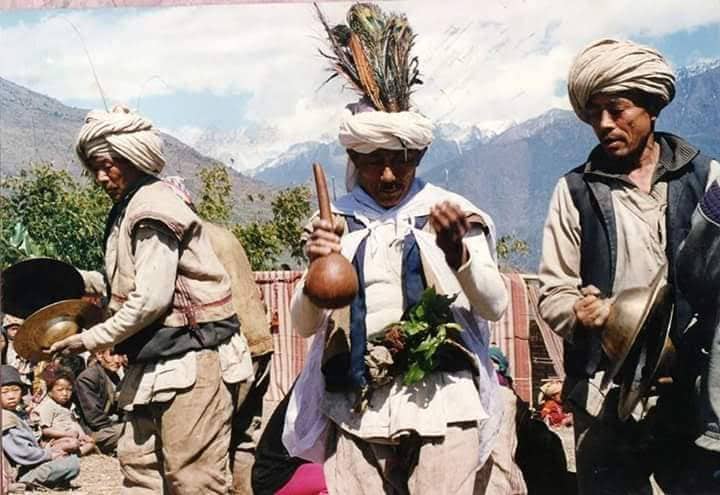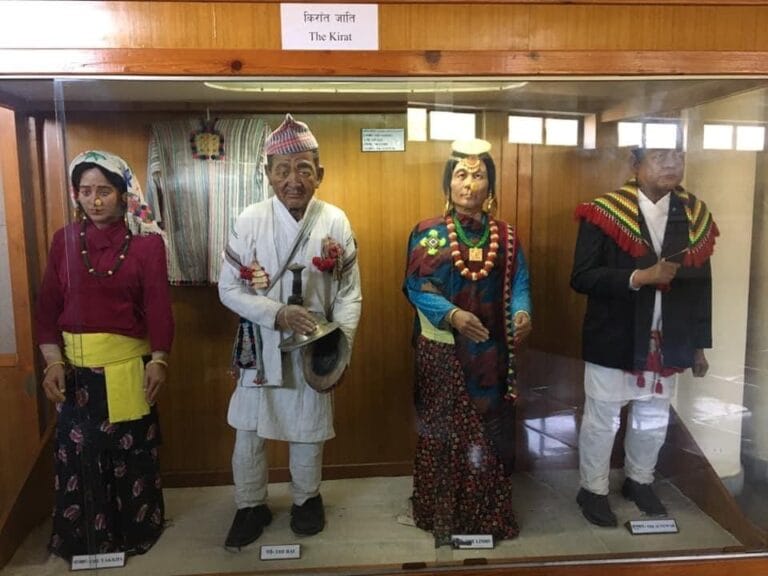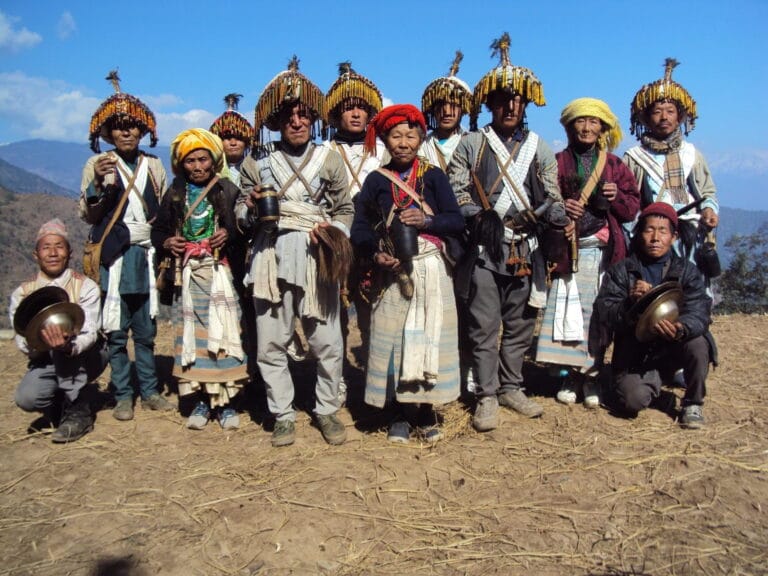Published on 05 December 2024
The Rai People: Rai Heritage and Spiritual Traditions
The Rai, also called the Khambu, are among the oldest and most influential tribes of the Kirat people. They embody Rai heritage and spiritual traditions and actively resisted the Gorkha invasion. Traditionally, the Rai people practiced animal husbandry and farming to sustain their livelihoods. They deeply respect nature and revere the spirits of their ancestors. The Rai community includes various linguistic groups like Bantawa, Chamling, Sampang, Dumi, and Kulung, among others. Other groups include Thulung, Khaling, Puma, Koyu, Nachhiring, Tilung, Yamphu, and Mewahang. Additional subgroups consist of Lohorung, Bahing, Athpare, Belhare, Chiling, Mugali, and Phangduwali. Smaller subgroups include Jerung, Wambule, and Dewas, adding to their cultural diversity.
Uncovering the Origins, Rai Heritage and Spiritual Traditions, and Cultural Practices
Geographic Distribution and Global Presence of the Rai People
The Rai people mainly live in several regions of Nepal, including Ilam, Panchthar, Terhathum, Taplejung, Jhapa, Morang, Sunsari, and the Kathmandu Valley. Over time, the Rai community has spread to other countries, including India, where they can be found in places like Darjeeling, Kalimpong, Kurseong, Mirik, and the Dooars region of West Bengal. Many Rai people also live in Assam, India. Additionally, Rai communities have established themselves in countries like Bhutan, the United Kingdom, Hong Kong, and the United States.
The Supreme Deity in Kirat Rai Belief: Sumnima and Paruhang
In our previous blog, we introduced the concept of “The Supreme Deity.” In the Kirat Rai belief system, Sumnima and Paruhang are the main divine figures. Sumnima, also called ‘Hengkhamma,’ is seen as the Mother of Earth, while Paruhang, known as ‘Ninamma,’ is the Father or Sky God. Together, they represent the core forces of creation, preservation, and life. The Rai people believe that Sumnima and Paruhang are the creators and protectors of all life. Interestingly, they are often compared to the Hindu deities Shiva and Parvati, although they come from different origins in Kirat traditions.
The Role of Shamans: Spiritual Practices and Rituals
According to Mundum, the cuckoo bird Mubumi was the first shaman, and the Kuthurke bird Kubumi was their assistant. In the Kulung Rai community, two female forest spirits, Laladum and Dolemku, are believed to create shamans.
In Rai shamanism, Nachhung, Mangpa, or Bijuwa act as spiritual leaders connecting with the spirit world. They worship nature and honor their ancestors in their rituals. The Rai people believe the soul is eternal and requires guidance after death. Nachhung guide ancestor souls to Chula Dhunga, a sacred household deity. They also perform rituals during significant events like Udhauli and Ubhauli to honor spirits.
The gods Paruhang and Sumnima choose Nachhung to care for all living beings. Nachhung act as messengers between gods and humans. They are identified through special signs, unique actions, or dreams about gods and goddesses. Their rituals involve the sounds of drums, cymbals, and brass plates. Both men and women can become shamans, known as Nachhung and Nachhungma, respectively.
Nachhung strengthen community values and beliefs through their role. They heal illnesses, assist in childbirth, and perform marriage and death rituals. They also preserve cultural and spiritual traditions by teaching Mundum, the sacred oral tradition, to future generations.
Death Rituals: Traditions, Beliefs, and Ceremonies
In Rai culture, Mundum scriptures say Mubumi, represented by the cuckoo bird, became the first shaman. Kubumi, symbolized by the Kuthurke bird, assisted Mubumi as the first helper. In the Kulung Rai community, female forest spirits Laladum and Dolemku create shamans, according to their beliefs.
Spiritual leaders called Nachhung, Mangpa, or Bijuwa lead Rai shamanism and enter altered states to communicate with spirits. These shamans worship nature and honor ancestors, connecting deeply with their environment. The Rai people believe the soul is eternal, requiring guidance to rest peacefully after death. Nachhung ensure ancestors’ souls find peace, especially during Udhauli and Ubhauli rituals. These rituals honor spirits at Chula Dhunga, a sacred household deity site.
Paruhang and Sumnima, supreme Rai deities, choose Nachhung to care for all living beings. Nachhung mediate between gods and people and gain recognition through signs, dreams, or spiritual experiences. Their rituals often include the rhythmic sounds of drums, cymbals, and brass plates. Both men and women can serve as shamans, with female shamans called Nachhungma.
Nachhung actively support the Rai community by guiding cultural practices and providing healing. They assist during childbirth, marriage, and death, maintaining their cultural significance. Nachhung also preserve and pass on Rai spiritual and cultural knowledge, ensuring Mundum teachings endure for future generations.
Conclusion
The Rai people, with their deep connection to nature, ancestral spirits, and unique spiritual practices, form an essential part of the Kirat community. Their worship of Sumnima and Paruhang, along with the vital role of shamans (Nachhung), showcases their profound beliefs in life, death, and the soul’s immortality. Through rituals and traditions passed down generations, the Rai maintain a strong cultural identity. Their rich heritage continues to thrive, ensuring that future generations can preserve and celebrate their unique customs and spiritual wisdom.
Share Your Thoughts and Spread the Knowledge!
If this article resonated with you, share it with your friends and family to help spread awareness of the fascinating traditions and spiritual practices of the Rai people. We’d love to hear your insights—drop a comment below and join the conversation. Let’s come together to celebrate the unique heritage of the Kirat community and honor the diversity that makes our world richer!
The Rai, also called the Khambu, are among the oldest and most influential tribes of the Kirat people. They embody Rai heritage and spiritual traditions and actively resisted the Gorkha invasion. Traditionally, the Rai people practiced animal husbandry and farming to sustain their livelihoods. They deeply respect nature and revere the spirits of their ancestors. The Rai community includes various linguistic groups like Bantawa, Chamling, Sampang, Dumi, and Kulung, among others. Other groups include Thulung, Khaling, Puma, Koyu, Nachhiring, Tilung, Yamphu, and Mewahang. Additional subgroups consist of Lohorung, Bahing, Athpare, Belhare, Chiling, Mugali, and Phangduwali. Smaller subgroups include Jerung, Wambule, and Dewas, adding to their cultural diversity.
Uncovering the Origins, Rai Heritage and Spiritual Traditions, and Cultural Practices
Geographic Distribution and Global Presence of the Rai People
The Rai people mainly live in several regions of Nepal, including Ilam, Panchthar, Terhathum, Taplejung, Jhapa, Morang, Sunsari, and the Kathmandu Valley. Over time, the Rai community has spread to other countries, including India, where they can be found in places like Darjeeling, Kalimpong, Kurseong, Mirik, and the Dooars region of West Bengal. Many Rai people also live in Assam, India. Additionally, Rai communities have established themselves in countries like Bhutan, the United Kingdom, Hong Kong, and the United States.
The Supreme Deity in Kirat Rai Belief: Sumnima and Paruhang
In our previous blog, we introduced the concept of “The Supreme Deity.” In the Kirat Rai belief system, Sumnima and Paruhang are the main divine figures. Sumnima, also called ‘Hengkhamma,’ is seen as the Mother of Earth, while Paruhang, known as ‘Ninamma,’ is the Father or Sky God. Together, they represent the core forces of creation, preservation, and life. The Rai people believe that Sumnima and Paruhang are the creators and protectors of all life. Interestingly, they are often compared to the Hindu deities Shiva and Parvati, although they come from different origins in Kirat traditions.
The Role of Shamans: Spiritual Practices and Rituals
According to Mundum, the cuckoo bird Mubumi was the first shaman, and the Kuthurke bird Kubumi was their assistant. In the Kulung Rai community, two female forest spirits, Laladum and Dolemku, are believed to create shamans.
In Rai shamanism, Nachhung, Mangpa, or Bijuwa act as spiritual leaders connecting with the spirit world. They worship nature and honor their ancestors in their rituals. The Rai people believe the soul is eternal and requires guidance after death. Nachhung guide ancestor souls to Chula Dhunga, a sacred household deity. They also perform rituals during significant events like Udhauli and Ubhauli to honor spirits.
The gods Paruhang and Sumnima choose Nachhung to care for all living beings. Nachhung act as messengers between gods and humans. They are identified through special signs, unique actions, or dreams about gods and goddesses. Their rituals involve the sounds of drums, cymbals, and brass plates. Both men and women can become shamans, known as Nachhung and Nachhungma, respectively.
Nachhung strengthen community values and beliefs through their role. They heal illnesses, assist in childbirth, and perform marriage and death rituals. They also preserve cultural and spiritual traditions by teaching Mundum, the sacred oral tradition, to future generations.
Death Rituals: Traditions, Beliefs, and Ceremonies
In Rai culture, Mundum scriptures say Mubumi, represented by the cuckoo bird, became the first shaman. Kubumi, symbolized by the Kuthurke bird, assisted Mubumi as the first helper. In the Kulung Rai community, female forest spirits Laladum and Dolemku create shamans, according to their beliefs.
Spiritual leaders called Nachhung, Mangpa, or Bijuwa lead Rai shamanism and enter altered states to communicate with spirits. These shamans worship nature and honor ancestors, connecting deeply with their environment. The Rai people believe the soul is eternal, requiring guidance to rest peacefully after death. Nachhung ensure ancestors’ souls find peace, especially during Udhauli and Ubhauli rituals. These rituals honor spirits at Chula Dhunga, a sacred household deity site.
Paruhang and Sumnima, supreme Rai deities, choose Nachhung to care for all living beings. Nachhung mediate between gods and people and gain recognition through signs, dreams, or spiritual experiences. Their rituals often include the rhythmic sounds of drums, cymbals, and brass plates. Both men and women can serve as shamans, with female shamans called Nachhungma.
Nachhung actively support the Rai community by guiding cultural practices and providing healing. They assist during childbirth, marriage, and death, maintaining their cultural significance. Nachhung also preserve and pass on Rai spiritual and cultural knowledge, ensuring Mundum teachings endure for future generations.
Conclusion
The Rai people, with their deep connection to nature, ancestral spirits, and unique spiritual practices, form an essential part of the Kirat community. Their worship of Sumnima and Paruhang, along with the vital role of shamans (Nachhung), showcases their profound beliefs in life, death, and the soul’s immortality. Through rituals and traditions passed down generations, the Rai maintain a strong cultural identity. Their rich heritage continues to thrive, ensuring that future generations can preserve and celebrate their unique customs and spiritual wisdom.
Share Your Thoughts and Spread the Knowledge!
If this article resonated with you, share it with your friends and family to help spread awareness of the fascinating traditions and spiritual practices of the Rai people. We’d love to hear your insights—drop a comment below and join the conversation. Let’s come together to celebrate the unique heritage of the Kirat community and honor the diversity that makes our world richer!
The Rai, also called the Khambu, are among the oldest and most influential tribes of the Kirat people. They embody Rai heritage and spiritual traditions and actively resisted the Gorkha invasion. Traditionally, the Rai people practiced animal husbandry and farming to sustain their livelihoods. They deeply respect nature and revere the spirits of their ancestors. The Rai community includes various linguistic groups like Bantawa, Chamling, Sampang, Dumi, and Kulung, among others. Other groups include Thulung, Khaling, Puma, Koyu, Nachhiring, Tilung, Yamphu, and Mewahang. Additional subgroups consist of Lohorung, Bahing, Athpare, Belhare, Chiling, Mugali, and Phangduwali. Smaller subgroups include Jerung, Wambule, and Dewas, adding to their cultural diversity.
Uncovering the Origins, Rai Heritage and Spiritual Traditions, and Cultural Practices
Geographic Distribution and Global Presence of the Rai People
The Rai people mainly live in several regions of Nepal, including Ilam, Panchthar, Terhathum, Taplejung, Jhapa, Morang, Sunsari, and the Kathmandu Valley. Over time, the Rai community has spread to other countries, including India, where they can be found in places like Darjeeling, Kalimpong, Kurseong, Mirik, and the Dooars region of West Bengal. Many Rai people also live in Assam, India. Additionally, Rai communities have established themselves in countries like Bhutan, the United Kingdom, Hong Kong, and the United States.
The Supreme Deity in Kirat Rai Belief: Sumnima and Paruhang
In our previous blog, we introduced the concept of “The Supreme Deity.” In the Kirat Rai belief system, Sumnima and Paruhang are the main divine figures. Sumnima, also called ‘Hengkhamma,’ is seen as the Mother of Earth, while Paruhang, known as ‘Ninamma,’ is the Father or Sky God. Together, they represent the core forces of creation, preservation, and life. The Rai people believe that Sumnima and Paruhang are the creators and protectors of all life. Interestingly, they are often compared to the Hindu deities Shiva and Parvati, although they come from different origins in Kirat traditions.
The Role of Shamans: Spiritual Practices and Rituals
According to Mundum, the cuckoo bird Mubumi was the first shaman, and the Kuthurke bird Kubumi was their assistant. In the Kulung Rai community, two female forest spirits, Laladum and Dolemku, are believed to create shamans.
In Rai shamanism, Nachhung, Mangpa, or Bijuwa act as spiritual leaders connecting with the spirit world. They worship nature and honor their ancestors in their rituals. The Rai people believe the soul is eternal and requires guidance after death. Nachhung guide ancestor souls to Chula Dhunga, a sacred household deity. They also perform rituals during significant events like Udhauli and Ubhauli to honor spirits.
The gods Paruhang and Sumnima choose Nachhung to care for all living beings. Nachhung act as messengers between gods and humans. They are identified through special signs, unique actions, or dreams about gods and goddesses. Their rituals involve the sounds of drums, cymbals, and brass plates. Both men and women can become shamans, known as Nachhung and Nachhungma, respectively.
Nachhung strengthen community values and beliefs through their role. They heal illnesses, assist in childbirth, and perform marriage and death rituals. They also preserve cultural and spiritual traditions by teaching Mundum, the sacred oral tradition, to future generations.
Death Rituals: Traditions, Beliefs, and Ceremonies
In Rai culture, Mundum scriptures say Mubumi, represented by the cuckoo bird, became the first shaman. Kubumi, symbolized by the Kuthurke bird, assisted Mubumi as the first helper. In the Kulung Rai community, female forest spirits Laladum and Dolemku create shamans, according to their beliefs.
Spiritual leaders called Nachhung, Mangpa, or Bijuwa lead Rai shamanism and enter altered states to communicate with spirits. These shamans worship nature and honor ancestors, connecting deeply with their environment. The Rai people believe the soul is eternal, requiring guidance to rest peacefully after death. Nachhung ensure ancestors’ souls find peace, especially during Udhauli and Ubhauli rituals. These rituals honor spirits at Chula Dhunga, a sacred household deity site.
Paruhang and Sumnima, supreme Rai deities, choose Nachhung to care for all living beings. Nachhung mediate between gods and people and gain recognition through signs, dreams, or spiritual experiences. Their rituals often include the rhythmic sounds of drums, cymbals, and brass plates. Both men and women can serve as shamans, with female shamans called Nachhungma.
Nachhung actively support the Rai community by guiding cultural practices and providing healing. They assist during childbirth, marriage, and death, maintaining their cultural significance. Nachhung also preserve and pass on Rai spiritual and cultural knowledge, ensuring Mundum teachings endure for future generations.
Conclusion
The Rai people, with their deep connection to nature, ancestral spirits, and unique spiritual practices, form an essential part of the Kirat community. Their worship of Sumnima and Paruhang, along with the vital role of shamans (Nachhung), showcases their profound beliefs in life, death, and the soul’s immortality. Through rituals and traditions passed down generations, the Rai maintain a strong cultural identity. Their rich heritage continues to thrive, ensuring that future generations can preserve and celebrate their unique customs and spiritual wisdom.
Share Your Thoughts and Spread the Knowledge!
If this article resonated with you, share it with your friends and family to help spread awareness of the fascinating traditions and spiritual practices of the Rai people. We’d love to hear your insights—drop a comment below and join the conversation. Let’s come together to celebrate the unique heritage of the Kirat community and honor the diversity that makes our world richer!




